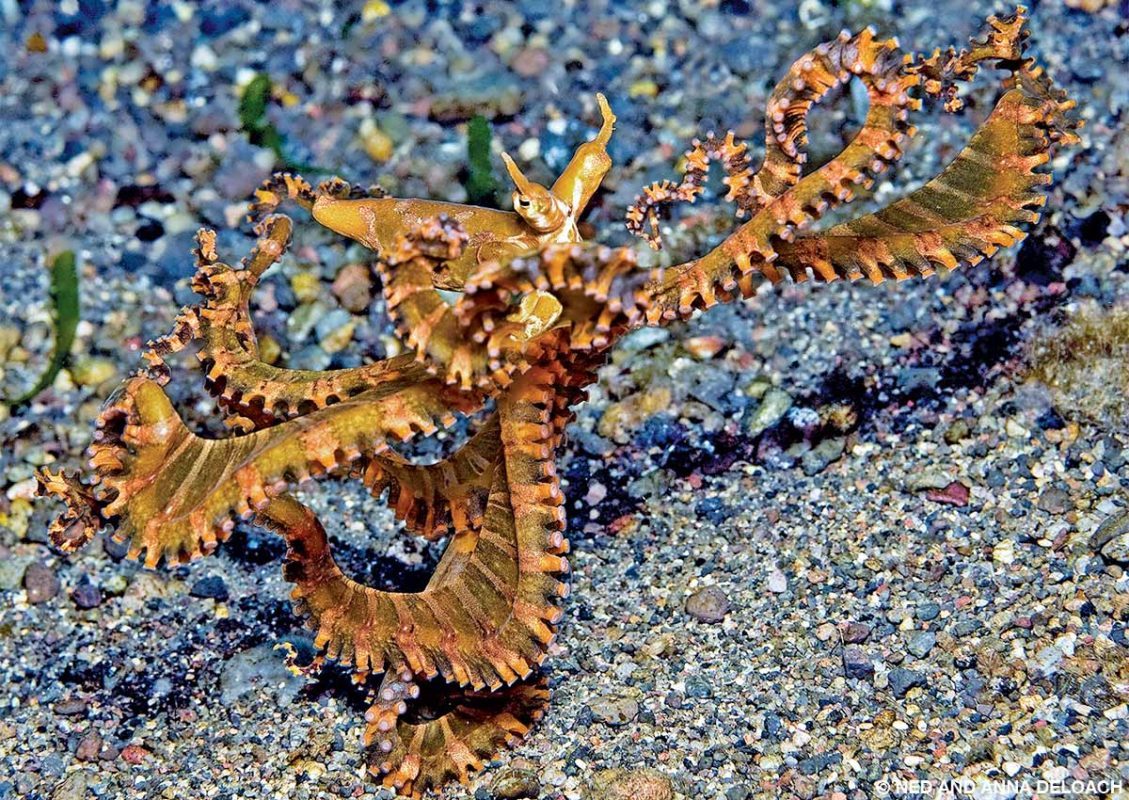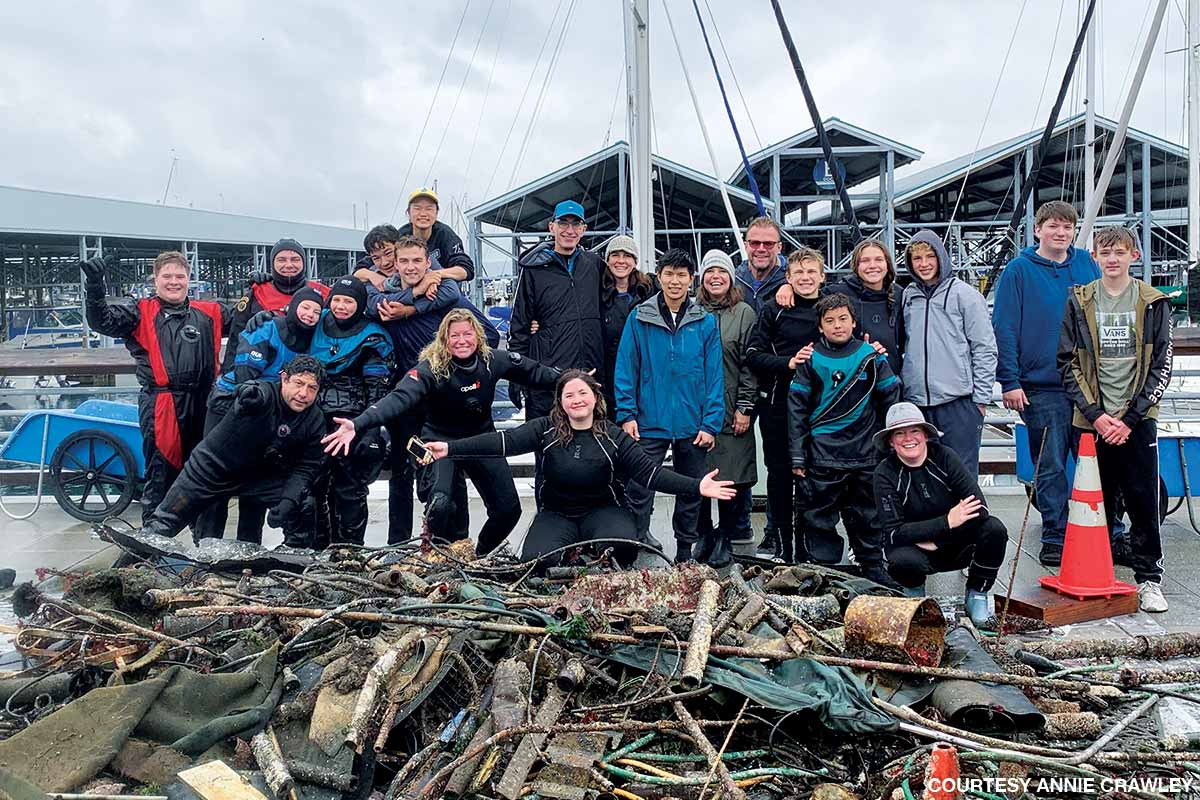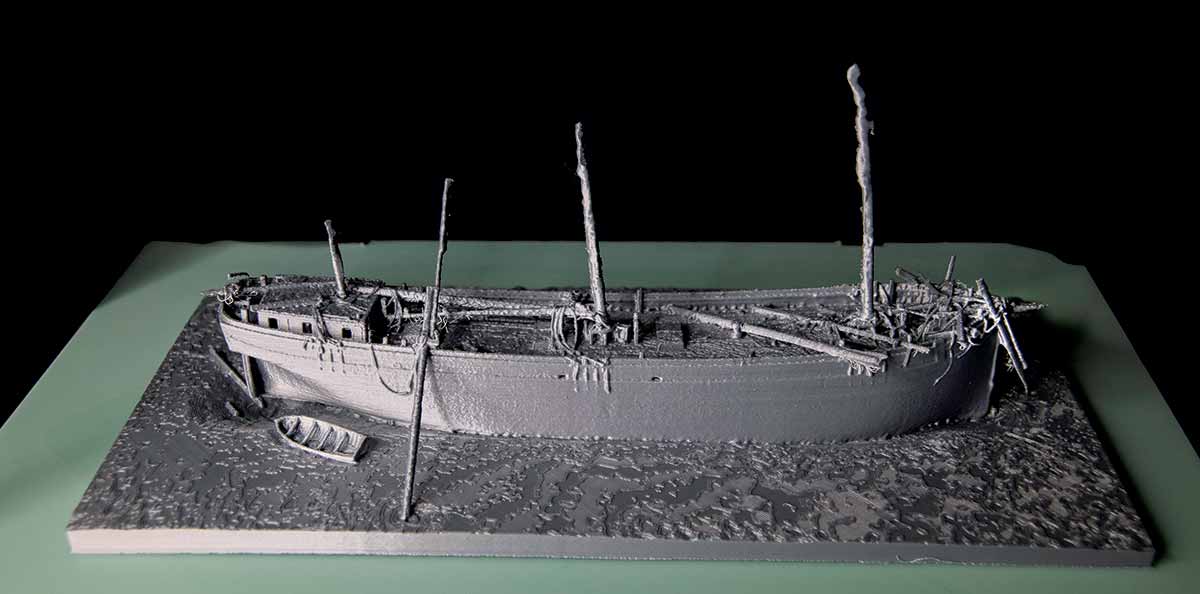In 1995, when we first explored wunderpus territory, which overlies much of the Coral Triangle, the then-undescribed octopus’ fame had spread far and wide. The newly sensational creatures attained much of their acclaim for dancing like dandies across sandy seafloors on eight unimaginably limber arms — an eye-popping feat of acrobatic dexterity well worth traveling halfway around the world to see.
Annie Crawley and her dive team of kids and teens are among the divers who frequent the Edmonds Underwater Park marine protected area just north of Seattle, Washington, in the Puget Sound area of the Salish Sea. With drysuits on and cameras in hand, the young ocean explorers document the underwater world with Crawley as their mentor and guide. Their mission: be a voice for the ocean.
Photogrammetry is the process of collecting a series of still images or videos of an object, such as a shipwreck, and then loading those images into software that can triangulate the photographed points to create a 3D model. Plenty of real-world applications can use this technology, including architecture, engineering, forensics, archaeology, mapping and video games. Becky Kagan Schott enjoys seeing wrecks come to life in a way that a single photo could never accomplish.
In her work, Rachel Lance, Ph.D., focuses on extreme environments, particularly the effects of explosions. “The human body is fascinating, especially when it fails,” she says. “We are not naturally equipped to survive in a deep underwater environment, so I am fascinated with the idea of finding ways to do so anyway. Perhaps it’s my naturally rebellious side.”
My buddy and I ascended to 20 feet for our safety stop. As soon as we surfaced I thought I saw the boat moving away from me but quickly realized I was disoriented. It felt like vertigo, but I managed to get on board the boat. I removed my gear and was talking to my buddy when I started involuntarily leaning forward until I lost my balance and collapsed face-down on the deck. I felt paralyzed and couldn’t get up.
Si le plongeur présente des symptômes et que vous lui prodiguez des soins, vous devez traiter les symptômes. Administrez-lui la plus forte concentration d'oxygène disponible et amenez-le à un centre de soins et de traitement définitif. Rappelez-vous que de nombreuses pathologies présentent des symptômes qui peuvent imiter le SCD. Ce n'est pas parce qu'une personne a plongé qu'elle souffre d'une maladie liée à la plongée. Lors de l'élaboration de votre plan d'action d'urgence, notez l'emplacement de la salle d'urgence la plus proche ou le lieu et la manière d'accéder aux services d'urgence locaux.



